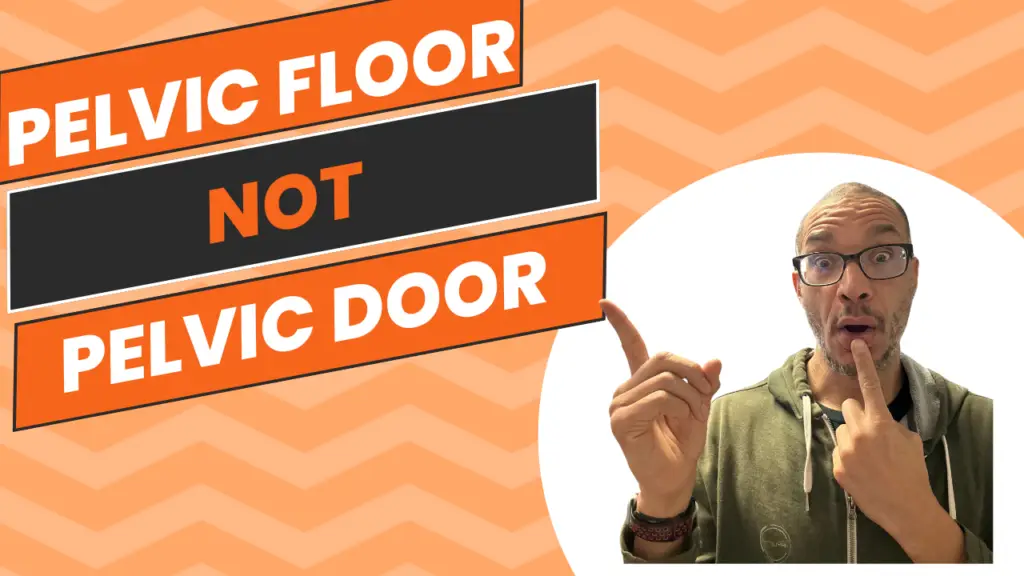Whether you’re a man or a woman, your pelvic floor is essential for a strong, mobile body — yet it’s one of the most overlooked systems in human movement. Your pelvic floor isn’t just “down there” — it’s the foundation for your spine, hips, and core.
But here’s the truth: Most people don’t know how to train it. They rely on outdated approaches or ignore it completely… until something goes wrong.
So let’s take a look at what your pelvic floor really does — and how to support it through a truly holistic approach.
Click on the image to watch the full video

Your Pelvic Floor: A Dynamic Foundation
Think of your pelvic floor like the foundation of a house. It needs to be solid to support everything above — and adaptable to handle pressure from above and below.
Every day, your pelvic floor supports both:
- Descending forces — gravity, body weight, internal organ pressure
- Ascending forces — from walking, standing, lifting, and movement
If your pelvic floor isn’t strong and balanced, your whole body compensates.
Why Most Pelvic Floor Training Fails
Most people only hear about Kegels — and usually just for women. But men need pelvic floor training too. And even then, Kegels alone won’t fix dysfunction.
A true pelvic floor program:
- Goes beyond isolated contraction
- Addresses the muscles, fascia, and ligaments
- Respects the nervous system and joint balance (especially the SI joint)
What Muscles Make Up the Pelvic Floor?
It’s more than just one muscle. Your pelvic floor includes:
- Levator Ani group (puborectalis, pubococcygeus, iliococcygeus)
- Coccygeus
- Piriformis & Obturator Internus (side/posterior pelvic walls)
- Glute max (deep fibers)
- Iliopsoas (passing through the pelvis to your spine)
These all work together. But they don’t function in isolation. You must also consider the fascia and ligaments that interconnect everything.
Ligaments: The “Smart Tissue” That Guides Your Body
Ligaments do more than hold bones together. They’re the intelligent sensors that tell your body how to move — or how not to.
Key ligaments affecting your pelvic floor:
- Cooper’s ligament (connects pelvic fascia to hip stabilizers)
- Pubofemoral ligament
- The sacro-recto-genital-vesicle-pubic ligament (yes, that’s one ligament!)
- Anterior sacroiliac ligaments
- Iliolumbar & pubic ligaments
These aren’t just structural — they’re sensory. If your ligaments aren’t healthy, your body loses its ability to move smartly.
Fascia: The Connective Highway
Fascia connects your pelvic floor to:
- Your diaphragm
- Your spine
- Your abdominal wall
- Your hips, legs, and shoulders
That’s why holistic pelvic floor care can’t stop at squeezing muscles. You must address how fascia tensions pull and support the whole structure.
Start Here: How to Rebuild Pelvic Floor Health
1. Begin With the Ligaments
Healthy ligaments guide healthy movement. In my osteopathic practice, I use manual therapy techniques like pumping and double TLS to:
- Improve fluid flow
- Activate proprioceptors
- Reset the tissue’s baseline tone
This sets the stage for real, sustainable strength.
2. Use ELDOA to Reinforce & Integrate
ELDOA (a unique form of fascial tension exercise) is one of the best ways to train the joints, ligaments, and fascia together.
It helps:
- Open restricted spaces
- Activate deep stabilizers
- Improve spinal and pelvic floor communication
3. Strengthen and Stretch the Muscles (Holistically)
Once the ligaments are awake, you can start training the key muscles:
- Piriformis
- Obturator internus
- Glute max (medial fibers)
- Iliopsoas
Use Hill’s Muscle Model: work the fibers, the fascia, and the ligament to train effectively.
4. Now Add Kegels — the Right Way
Only once you’ve built a strong base should you begin isolated Kegel contractions. And even then, you must avoid compensation patterns.
When doing Kegels:
- Do not squeeze your glutes, abs, or adductors
- Train your brain to activate just the pelvic floor
- Separate contractions from surrounding muscle groups
- Progress to coordination patterns using glutes, adductors, and diaphragm separately
This is crucial — especially for women during childbirth or anyone recovering from dysfunction.
Final Thoughts: The Pelvic Floor Is a Whole-Body System
Most people treat the pelvic floor like a switch — either it’s “on” or it’s “off.” But the truth is, your pelvic floor reflects your entire body’s condition.
If your SI joint is off, if your glutes are weak, if your diaphragm is tight — your pelvic floor will suffer. And if you ignore it? You’ll feel the effects in your strength, mobility, and long-term health.
Ready to Train Smarter?
If you’re ready to go deeper — not just with your pelvic floor, but your whole-body health and longevity — I’ve got 3 free ways to help:
- ✅ Download my free eBook: 4 Steps to Live Your Best Life
- ✅ Schedule a free consult and find out what’s missing in your current plan
Let’s stop isolating and start integrating.
See you next week.
it’s not just working out, it’s building a foundation for a better life.
Find out more @

Leave a Reply